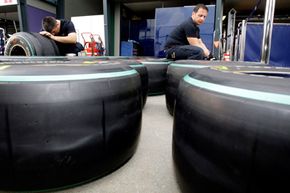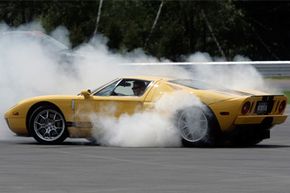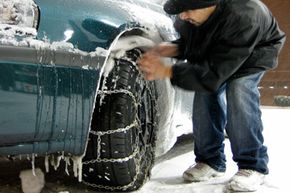Your car's tires are (arguably) the most important part of the vehicle. The tires, after all, are what transfer the engine's energy to the pavement in a way so that the car can move forward.
Tires are able to do this because of traction. Traction is the resistance between the tire and the ground in reaction to torque being exerted by the wheel axle under engine power.
Advertisement
Simply put, your car's tires transfer energy to the pavement. There's a reason people often invoke the phrase, "This is where the rubber meets the road," when they're referring to moving forward with some undertaking. Because no matter how much horsepower you have, you'll be hard-pressed to use it if your wheels are spinning with no ability to gain traction on the ground.
Keep reading to find out some of the specifics of how tire traction keeps you and your car moving forward.



